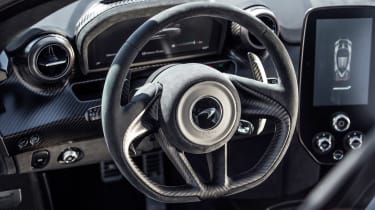McLaren Senna review - the ultimate track driving experience - Design
McLaren has taken a legendary name and produced what genuinely could become a legendary car
Design
Perhaps the most controversial aspect of the Senna is its exterior design, but much of how it looks has been dictated by form following function. The key to the whole setup is the active element of the aerodynamics: the front aero blades and that preposterous, enormous rear wing. The former bleeds off downforce if required to maintain handling balance, while the later also rotates (through 25 degrees in as little as 0.3 seconds) to aide braking performance. All over the Senna, from the front, the sides, underneath and on the rear deck, air is massaged, manipulated and squeezed for the benefit of both cooling and aerodynamic performance.
Like all McLarens, the Senna is built around the firm’s carbon fibre monocage tub, here in its third evolution. It incorporates a double walled rear structure, thereby negating the need for a seperate roll over bar. Carbon fibre is used extensively throughout the car: the rear wing weighs under 5kg in spite of its size and the loads it must support; the weight of all the Senna’s body panels combined is only 60kg, with the front wing sections weighing just 0.6kg.





